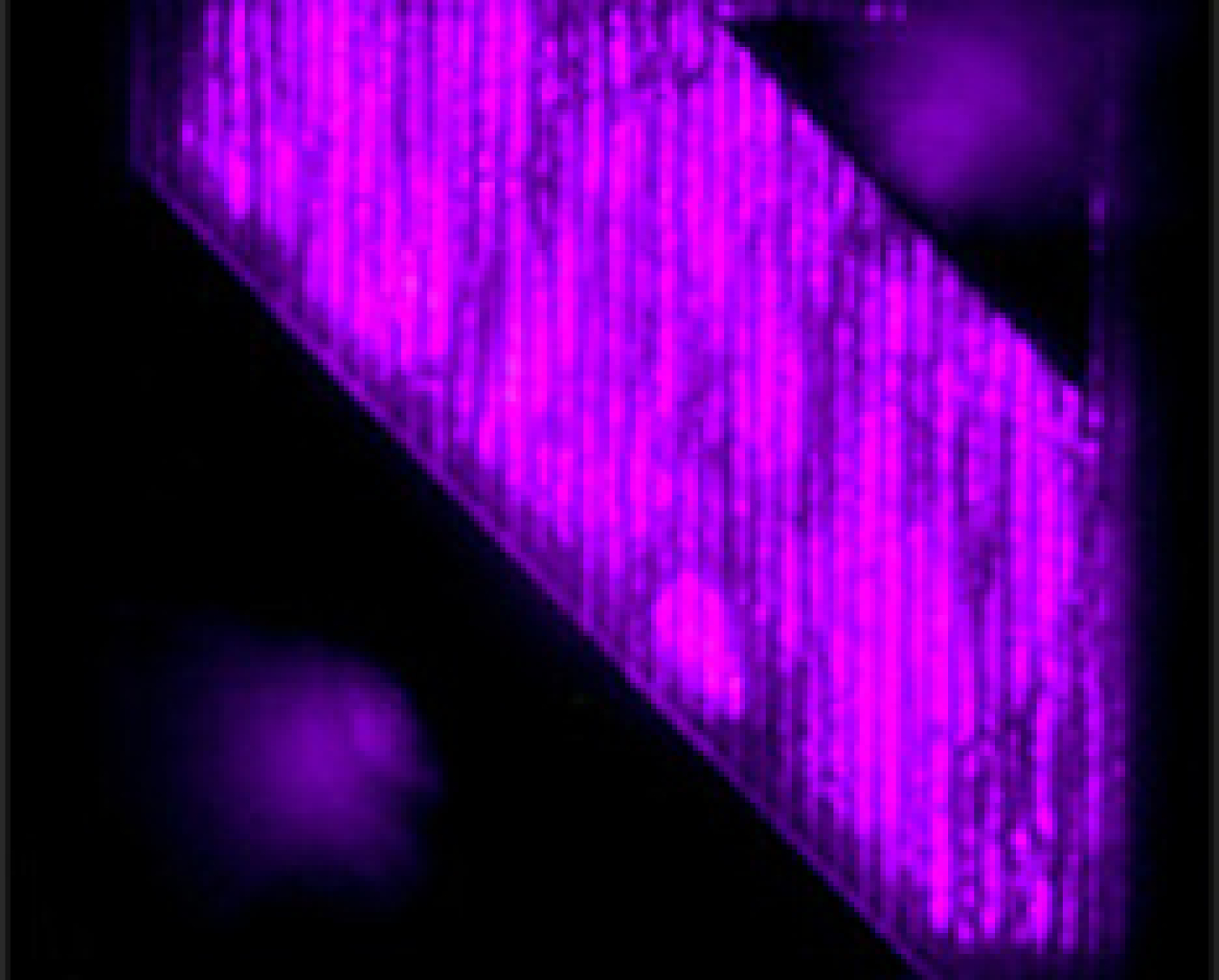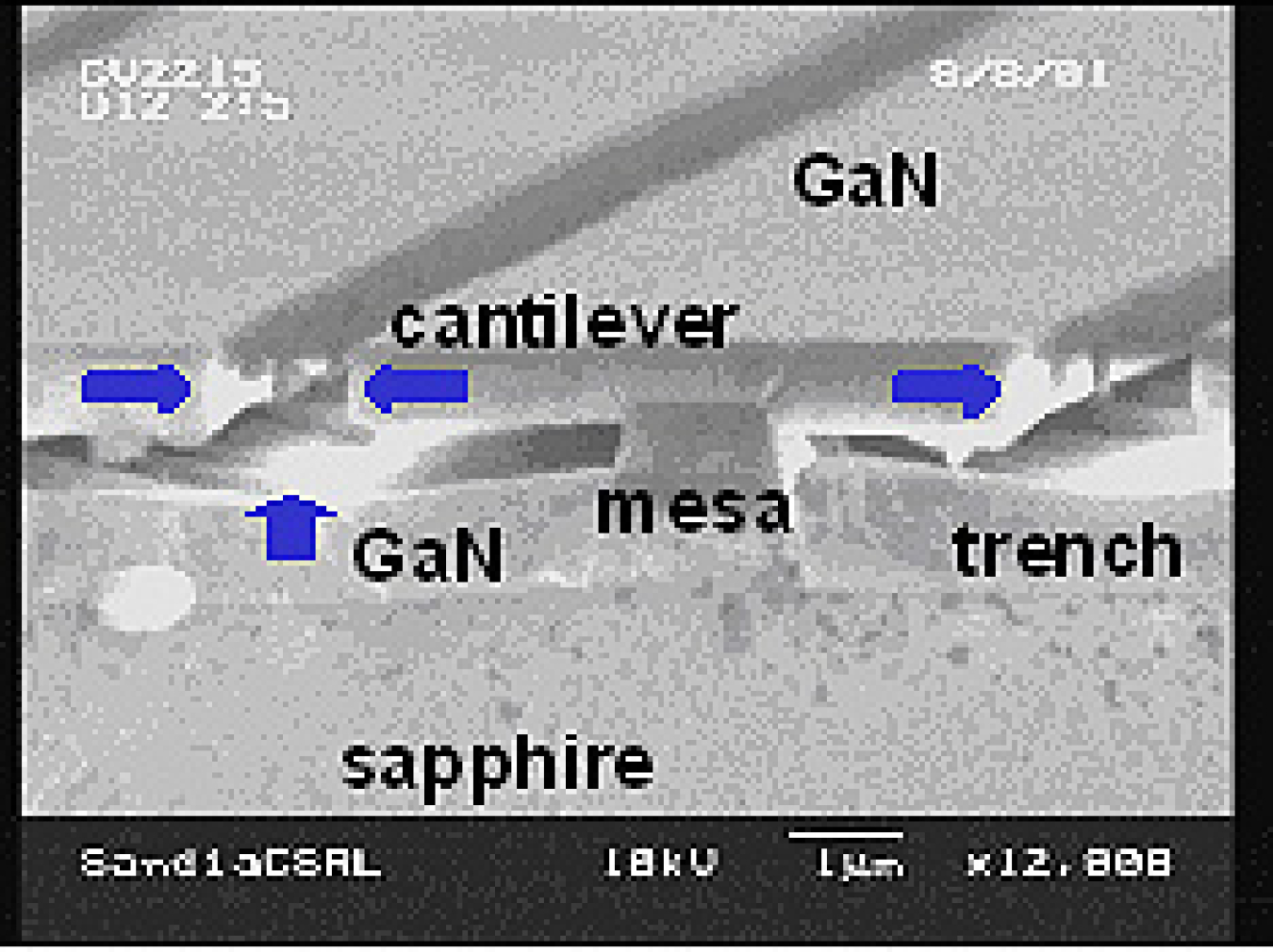Sandia National Laboratories received an R&D 100 Award from R&D Magazine for development of a new process for growing gallium nitride on an etched sapphire substrate. The process, called cantilever epitaxy, promises to make brighter and more efficient green, blue, and white LEDs.
The cantilever epitaxy process eliminates many of the problems that limit the performance of LEDs grown on sapphire/gallium nitride substrates. In the past few years, LEDs have been grown with various combinations of gallium nitride alloys on sapphire substrates. In the process, regions of imperfections – called dislocations – are formed, which limit LED brightness and performance. The cantilever epitaxy process reduces the number of dislocations, offering the potential for longer-lived and better performing LEDs.
Reducing Dislocation Density Through GaN Cantilever Growth
Sandia's cantilever epitaxy growth process begins with etching trenches into the sapphire substrate, leaving stripes of mesas in the surface. Vertical growth of the GaN overlayer is then initiated on the mesas. After some vertical growth, the conditions of the growth reactor are adjusted to produce lateral growth over the trenches. This lateral cantilever material – suspended by the mesas – does not contain dislocations because it is not in contact with the substrate. After adjacent cantilevers are grown together, the material is grown vertically to produce the desired thickness. In the end, dislocations produced by contact with the substrates are confined to the mesa areas, and the cantilever regions over the trenches have very low dislocation densities.

An electroluminescence image of an LED fabricated using the cantilever epitaxy process shows uniform LED intensity over multiple regions.

A cross-sectional microscope image shows GaN cantilevers growing toward each other with GaN growing upward in the trenches.
The cantilever epitaxy research conducted at Sandia was supported in part by an internal Laboratory Directed Research and Development (LDRD) Grand Challenge, and in part by a cooperative agreement from DOE (Office of Energy Efficiency and Renewable Energy, Building Technologies Office) for a collaborative project with Lumileds Lighting.
Return to Research Highlights

